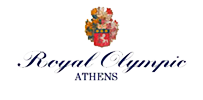Technical Committee
Mustafa Altun, Istanbul Technical University
Lorena Anghel, Phelma Grenoble INP, TIMA Laboratory
Swarup Bhunia, University of Florida
Pierre Boulet, University Lille 1
Meng-Fan Chang, National Tsing Hua University
Yiran Chen, Duke University
Fabien Clermidy, CEA-Leti
Sorin Cotofana, Technische Universiteit Delft, The Netherlands
Shamik Das, The MITRE Corporation
Catherine Dezan, UBO/Lab-STICC
Joseph Friedman, The University of Texas at Dallas
Pierre-Emmanuel Gaillardon, University of Utah
Bastien Giraud, CEA-Leti
Jie Han, University of Alberta
Andreas Herkersdorf, Technical University of Munich
Daniel Ielmini, Politecnico di Milano
Jacques-Olivier Klein, Institut d'Electronique Fondamentale
Sebastien Le-Beux, Lyon Institute of Nanotechnology (INL)
Bernabe Linares-Barranco, IMSE-CNM (CSIC & Univ. of Seville)
Weiqiang Liu, Nanjing University of Aeronautics and Astronautics
Marisa Lopez-Vallejo, Universidad Politécnica de Madrid
Kartik Mohanram, University of Pittsburgh
Anca Molnos, CEA-LETI, France
Csaba Andras-Moritz, UMass Amherst
Kundan Nepal, University of St Thomas
Michael Niemier, University of Notre Dame
Fabrizio Lombardi, Northeastern University, USA
Ian O'Connor, Lyon Institute of Nanotechnology
Vojin G. Oklobdzija, University of California, Davis
Marco Ottavi, University of Rome "Tor Vergata"
Damien Querlioz, IEF, University Paris-Sud
Garrett Rose, University of Tennessee
Daniele Rossi, University of Hertfordshire
Antonio Rubio, Universitat Politecnica de Catalunya, Spain
Georgios Ch. Sirakoulis, Democritus University of Thrace, Greece
Mircea Stan, University of Virginia
Adam Stieg, University of California, Los Angeles
Lionel Torres, LIRMM
Amit Trivedi, University of Illinois at Chicago
Lucian Vintan, "Lucian Blaga" University of Sibiu
Ioannis Vourkas, Universidad Técnica Federico Santa María
Alex Yakolev, University of Newcastle



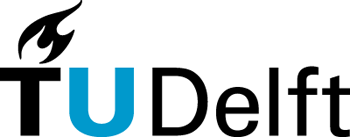
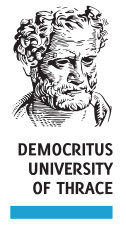
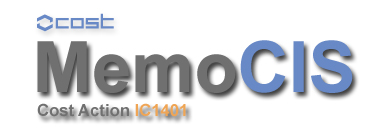


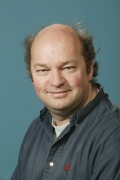 Prof. Dr. C.I. (Chris) De Zeeuw is professor and chair at the Dept. of Neuroscience of Erasmus MC in Rotterdam, and scientific co-director of the Netherlands Institute for
Neuroscience of the Royal Dutch Academy of Arts & Sciences (KNAW) in Amsterdam. Chris De Zeeuw started his career in Rotterdam (lab Jan Voogd) where he received in 1990 his
PhD degree in medicine Cum Laude. Following his medical studies at the University of Amsterdam and University of Rotterdam he got his medical degree (MD) one year later,
again Cum Laude. As a first-year PhD-student at his first international lecture in Turin, Italy, he surprised the international neuroscience community by showing a new
technology, by which one could demonstrate for the first time simultaneously the connectivity of nerve fibers and the identity of their neurotransmitters. This new
technology led to numerous discoveries of new functional connections in the brain. Together with two other major technical developments in the field of neuro-anatomy
that he introduced in his thesis, he provided a basis for deciphering neural networks at the ultrastructural level. After obtaining his PhD, he received the prestigious
Huygens Science Award - KNAW fellowship from the Royal Dutch Academy of Arts & Sciences, which allowed him to move to New York (Rodolfo Llinas) and enter the field of
neurophysiology. Here he unraveled the circuitry of the vestibulocerebellum underlying eye movement control and he showed that this part of the brain can create predictions
that are required for motor learning. In the meantime, he discovered a new cell organelle, the dendritic lamellar body, that is widely distributed in the brain and implicated
in the functional control of electrical synapses, which form next to chemical synapses the main substrate of communication between neurons in the central nervous system. His
desire to use transgenics for elucidating brain function inspired him to move, once again, to another field, the field of molecular biology (Frank Grosveld). In this field he
discovered new genes, one of which was CYLN2, which turned out to be implicated in Williams Syndrome; today, diagnostic screens for translocations of this gene are used worldwide.
In 1998 he was invited to start up the Dept. of Neuroscience that he has been chairing since. Over the past decade the Dept. of Neuroscience has flourished in that it gained
about ten times more scientists and staff, and that many of the postdocs and faculty received important awards and fellowships. For example, in the prestigious VENI, VIDI and
VICI program of NWO and ZonMw, the main Dutch grant agencies, this Dept. alone received more than 25 fellowships, of which more than 30% were ranked number 1 in the country
including the entire medical field and the field of life sciences. His Department was also the first of Erasmus MC and Erasmus University to receive a EURYI Award. More than
75 PhDs successfully defended their thesis and more than seven young scientists already left the Dept. to become chair and/or full professor elsewhere. By participating actively
in the lab, De Zeeuw has not only inspired many of his students to become successful, but he himself also received several important personal awards. In 2001, he received the
PIONIER Award of NWO and ZonMW, being ranked number 1 of all medical scientists in the Netherlands. In 2006, he received personally from Her Majesty, Queen Beatrix, the so-called
Beatrix Award, which was given to the Dutch scientist with the best performance in the field of neuroscience and movement disorders over the 50-year period from 1956 to 2006.
In addition, he obtained many prestigious grants from many national and international science agencies, such as NWO, ZonMw, FES, HFSP, EU, and KNAW, and he has been presiding
over national and international consortia governing multimillion-Euro programs such as the NeuroBSIK Mouse Phenomics and NeuroBasic Pharma Phenomics programs for valorization
of animal models for brain disorders and pharmaceutical products in the Netherlands, and the European SENSOPAC program for Bio-Inspired networks supporting Robotics control. Many
of the technologies he developed for academic neuroscience research are nowadays commercially available via Neurasmus BV. In 2007 he became, next to being chairman at Erasmus MC,
co-director of the Netherlands Institute for Neuroscience to determine its new scientific focus and start up a new group on cerebellar cognition. In 2012 he received an ERC grant
and in 2014 he was elected as a member of the Royal Dutch Academy of Arts & Sciences. He published three books on cerebellar function and he has been able to publish well
over 300 papers in all disciplines of neuroscience ranging from molecular neurobiology up to computational modeling, accumulating into more than 15.000 citations. This included
papers in many major journals including Cell, Neuron, Science, Nature Genetics, Nature Reviews, Nature Neuroscience, Nature Cell Biology, Nature Communications, Cell Reports, eLife,
New England Journal, TINS, TICS, Brain, Annals of Neurol, JAMA, EMBO, and PNAS. His research has led to unprecedented insights of how the brain, in particular the cerebellum, may
control learning behavior.
Prof. Dr. C.I. (Chris) De Zeeuw is professor and chair at the Dept. of Neuroscience of Erasmus MC in Rotterdam, and scientific co-director of the Netherlands Institute for
Neuroscience of the Royal Dutch Academy of Arts & Sciences (KNAW) in Amsterdam. Chris De Zeeuw started his career in Rotterdam (lab Jan Voogd) where he received in 1990 his
PhD degree in medicine Cum Laude. Following his medical studies at the University of Amsterdam and University of Rotterdam he got his medical degree (MD) one year later,
again Cum Laude. As a first-year PhD-student at his first international lecture in Turin, Italy, he surprised the international neuroscience community by showing a new
technology, by which one could demonstrate for the first time simultaneously the connectivity of nerve fibers and the identity of their neurotransmitters. This new
technology led to numerous discoveries of new functional connections in the brain. Together with two other major technical developments in the field of neuro-anatomy
that he introduced in his thesis, he provided a basis for deciphering neural networks at the ultrastructural level. After obtaining his PhD, he received the prestigious
Huygens Science Award - KNAW fellowship from the Royal Dutch Academy of Arts & Sciences, which allowed him to move to New York (Rodolfo Llinas) and enter the field of
neurophysiology. Here he unraveled the circuitry of the vestibulocerebellum underlying eye movement control and he showed that this part of the brain can create predictions
that are required for motor learning. In the meantime, he discovered a new cell organelle, the dendritic lamellar body, that is widely distributed in the brain and implicated
in the functional control of electrical synapses, which form next to chemical synapses the main substrate of communication between neurons in the central nervous system. His
desire to use transgenics for elucidating brain function inspired him to move, once again, to another field, the field of molecular biology (Frank Grosveld). In this field he
discovered new genes, one of which was CYLN2, which turned out to be implicated in Williams Syndrome; today, diagnostic screens for translocations of this gene are used worldwide.
In 1998 he was invited to start up the Dept. of Neuroscience that he has been chairing since. Over the past decade the Dept. of Neuroscience has flourished in that it gained
about ten times more scientists and staff, and that many of the postdocs and faculty received important awards and fellowships. For example, in the prestigious VENI, VIDI and
VICI program of NWO and ZonMw, the main Dutch grant agencies, this Dept. alone received more than 25 fellowships, of which more than 30% were ranked number 1 in the country
including the entire medical field and the field of life sciences. His Department was also the first of Erasmus MC and Erasmus University to receive a EURYI Award. More than
75 PhDs successfully defended their thesis and more than seven young scientists already left the Dept. to become chair and/or full professor elsewhere. By participating actively
in the lab, De Zeeuw has not only inspired many of his students to become successful, but he himself also received several important personal awards. In 2001, he received the
PIONIER Award of NWO and ZonMW, being ranked number 1 of all medical scientists in the Netherlands. In 2006, he received personally from Her Majesty, Queen Beatrix, the so-called
Beatrix Award, which was given to the Dutch scientist with the best performance in the field of neuroscience and movement disorders over the 50-year period from 1956 to 2006.
In addition, he obtained many prestigious grants from many national and international science agencies, such as NWO, ZonMw, FES, HFSP, EU, and KNAW, and he has been presiding
over national and international consortia governing multimillion-Euro programs such as the NeuroBSIK Mouse Phenomics and NeuroBasic Pharma Phenomics programs for valorization
of animal models for brain disorders and pharmaceutical products in the Netherlands, and the European SENSOPAC program for Bio-Inspired networks supporting Robotics control. Many
of the technologies he developed for academic neuroscience research are nowadays commercially available via Neurasmus BV. In 2007 he became, next to being chairman at Erasmus MC,
co-director of the Netherlands Institute for Neuroscience to determine its new scientific focus and start up a new group on cerebellar cognition. In 2012 he received an ERC grant
and in 2014 he was elected as a member of the Royal Dutch Academy of Arts & Sciences. He published three books on cerebellar function and he has been able to publish well
over 300 papers in all disciplines of neuroscience ranging from molecular neurobiology up to computational modeling, accumulating into more than 15.000 citations. This included
papers in many major journals including Cell, Neuron, Science, Nature Genetics, Nature Reviews, Nature Neuroscience, Nature Cell Biology, Nature Communications, Cell Reports, eLife,
New England Journal, TINS, TICS, Brain, Annals of Neurol, JAMA, EMBO, and PNAS. His research has led to unprecedented insights of how the brain, in particular the cerebellum, may
control learning behavior.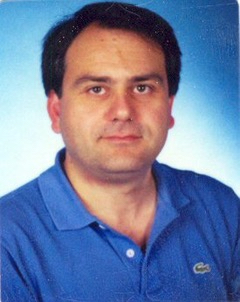 Dr Panagiotis Dimitrakis graduated the Physics Department of the University of Athens (BSc 1995, MSc 1998) and received
his PhD degree from the National Technical University of Athens. He has 11 invited talks and more than 40 papers in international
conference proceeding volumes. He has published more than 60 papers in international journals
and 7 book chapters on the physics and the electrical characterization of electronic devices. He is the editor of the
book series "Charge-trapping nonvolatile memories” (Springer). He joint as research staff NCSR “Demokritos” since 2007 and now
he is Senior Researcher and manager of the Central Cleanroom Facility at the Institute of Nanoscience and Nanotechnology. His research
interests are focused in novel NVMs, organic and Graphene nanoelectronics, biolectronics as well as nanostructured CMOS devices.
Currently, he is the prime investigator of 4 projects in quantum technologies and novel microelectronics devices. He is a senior member of IEEE.
Dr Panagiotis Dimitrakis graduated the Physics Department of the University of Athens (BSc 1995, MSc 1998) and received
his PhD degree from the National Technical University of Athens. He has 11 invited talks and more than 40 papers in international
conference proceeding volumes. He has published more than 60 papers in international journals
and 7 book chapters on the physics and the electrical characterization of electronic devices. He is the editor of the
book series "Charge-trapping nonvolatile memories” (Springer). He joint as research staff NCSR “Demokritos” since 2007 and now
he is Senior Researcher and manager of the Central Cleanroom Facility at the Institute of Nanoscience and Nanotechnology. His research
interests are focused in novel NVMs, organic and Graphene nanoelectronics, biolectronics as well as nanostructured CMOS devices.
Currently, he is the prime investigator of 4 projects in quantum technologies and novel microelectronics devices. He is a senior member of IEEE.